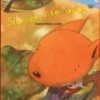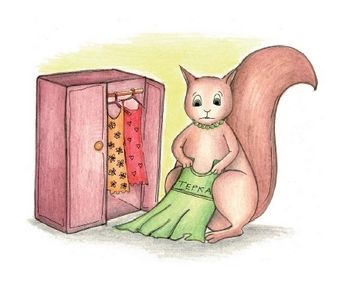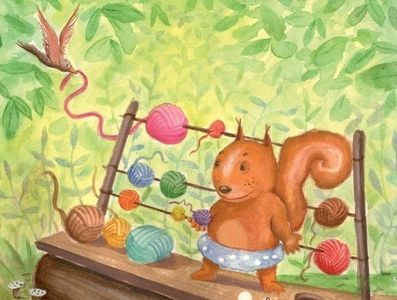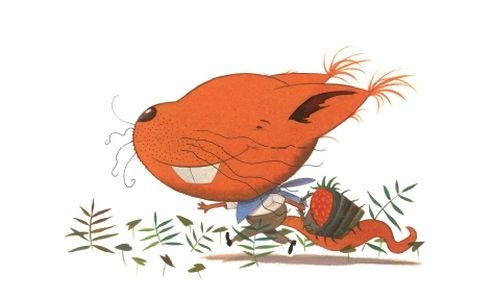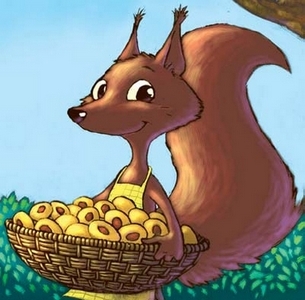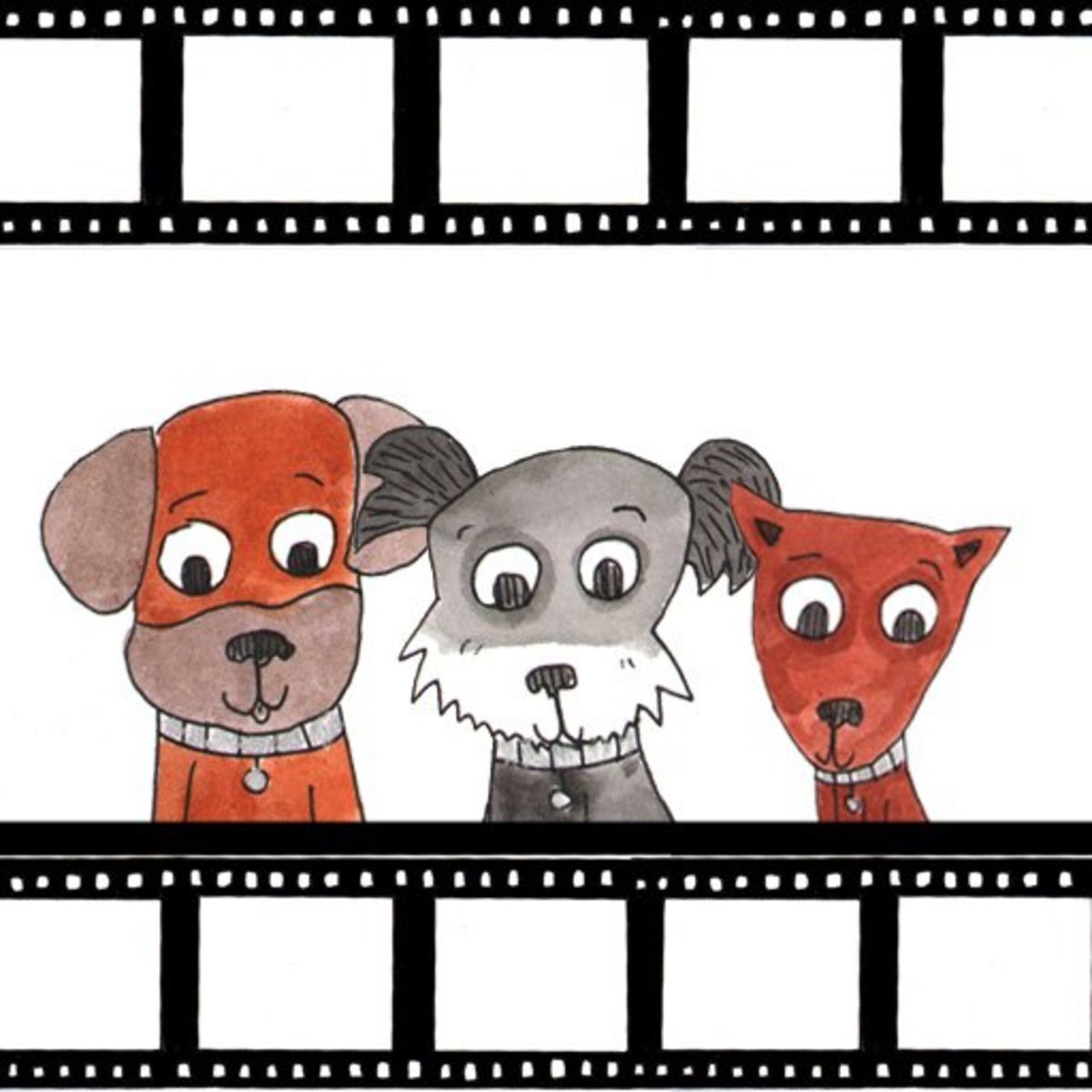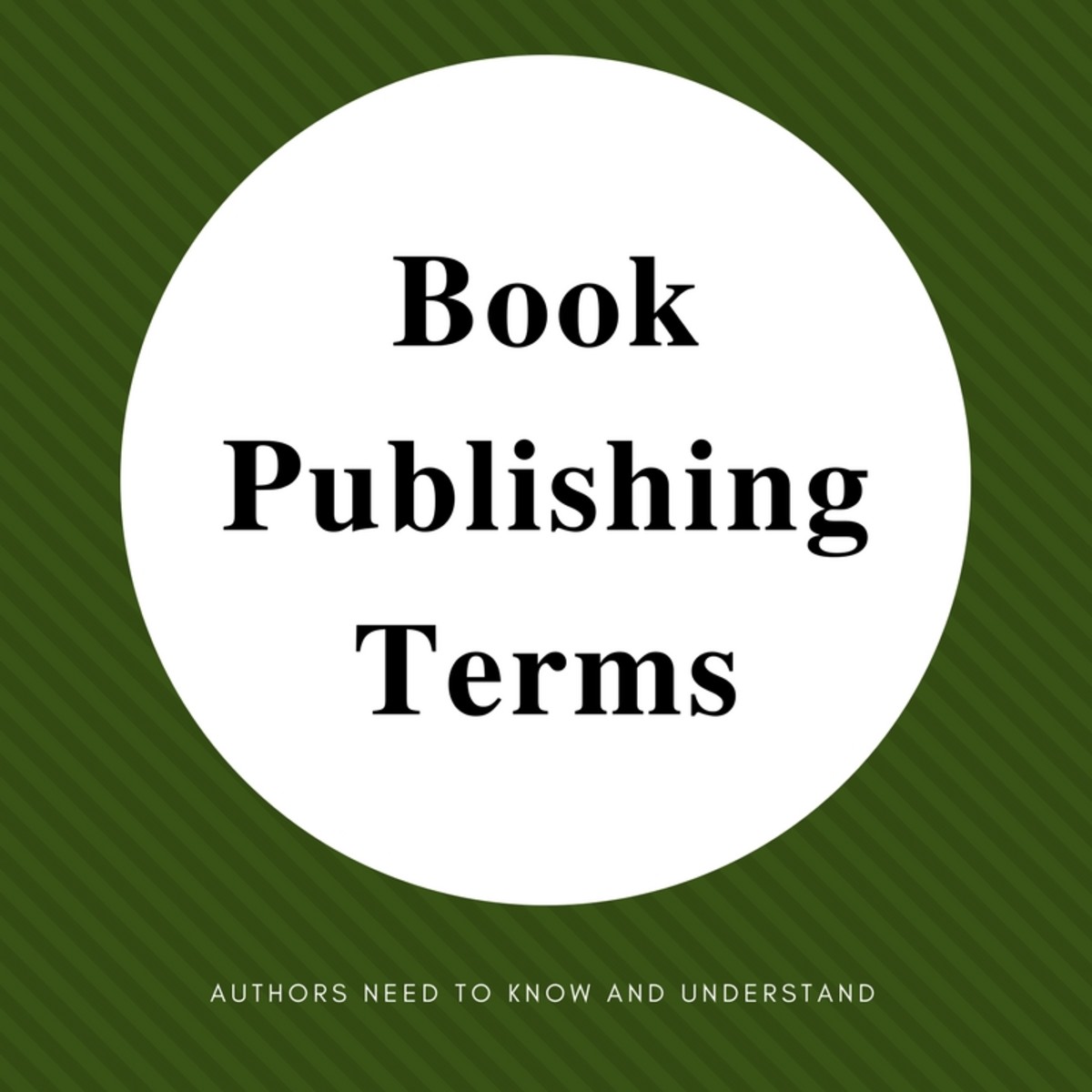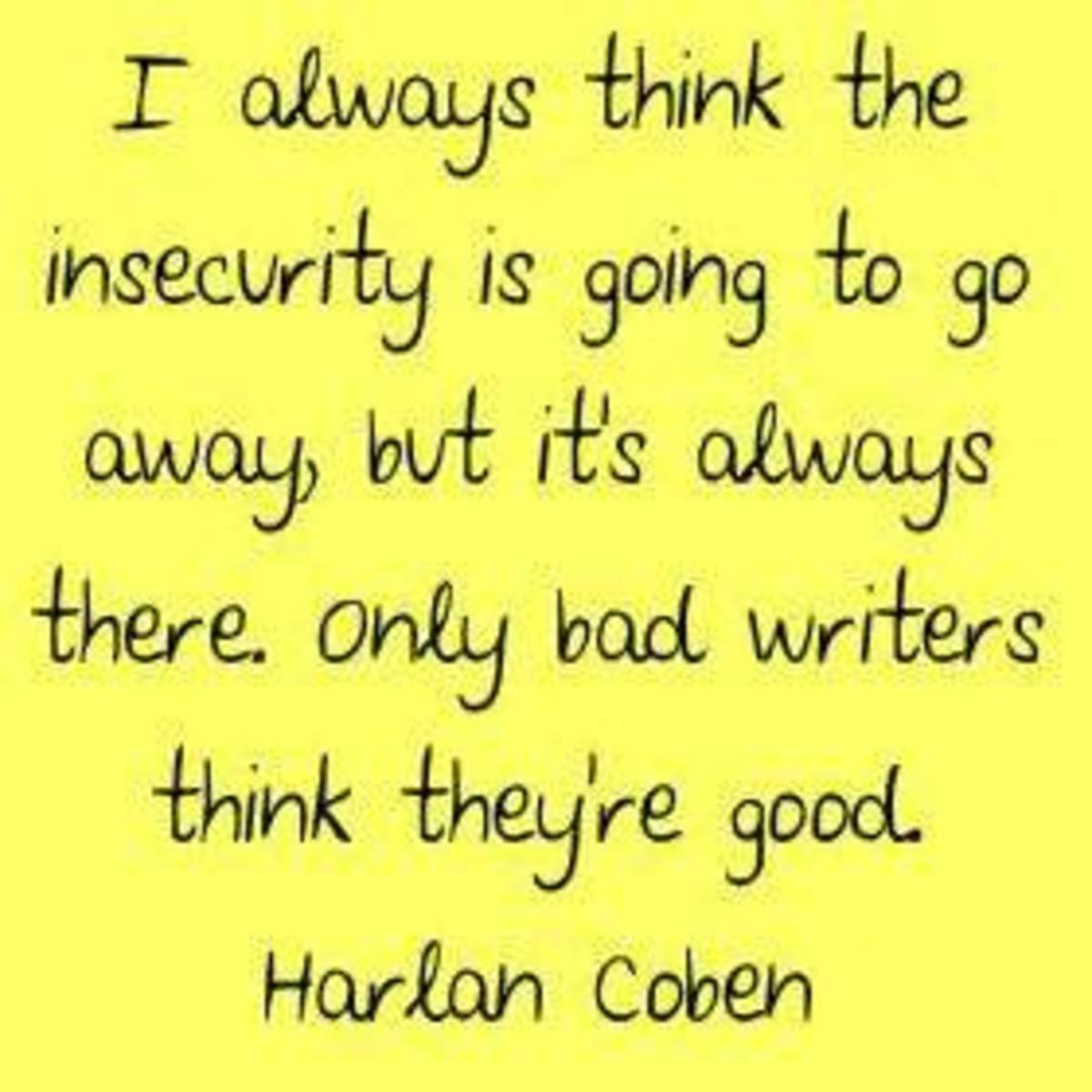How to publish a picture book: a beginner's guide
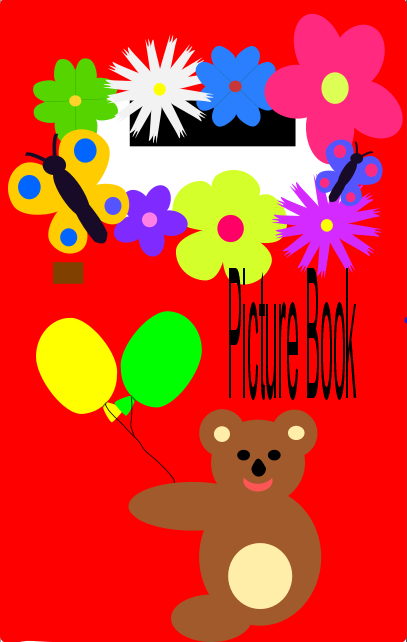
Publish your own picture book!
Picture book publishing is a popular business with a lot of written and unwritten rules which can be best learned through experience.
I am professional writer for more than half of my life and became a publisher in 2004. I wrote more than 300 fairy tales and short stories (all published in different media) for children and my publishing house published 25 picture books and books for children by now. So I guess I have some qualifications.
I learned a lot from mine and others' mistakes and here I will share my knowledge about picture book publishing in form of easy step by step instructions. So why making your own, if you can make progress thanks to others' errors? Don't worry, book publishing is ever evolving business, so there will always be plenty of room to make some new, original mistakes ...
The intro image is from Clker.com, PD and RF license. Other images in this article can be found on different Public Domain services, except images from our publishing house which are copyrighted and with all rights reserved.)
Are you ready to publish your first picture book? Hey, ho, let's go!
Book publishing is a team business

As every complex task publishing of picture book can be divided into smaller ones. These are necessary steps:
1. get a text
2. get pictures
3. design a book
4. print a book
5. transport a book
6. store a book
7. sell a book
As you can see, I used fairy tale number seven to present all necessary phases of publishing of every kind of book, not only picture book. Of course some steps can be divided even further or they can be joined at publishers convenience. Anyhow, book publishing is generally not a one man job (although it can be done). It is a team work, where every member contribute his knowledge so team can produce best possible result.
You, as a publisher or self-publisher should provide money for every task (money issues will be probably discussed in separate lens, to keep this reasonably short), and, what is even more important, you should lead the team. Can you do that?
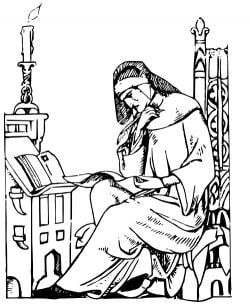
1. Text for picture book
Finding an author for picture book should not be a problem. If you are a publisher more than six months, your mail-box is probably loaded with aspiring authors who managed to translate their literary ambitions into cute text who is loved by everybody who have seen it.
This means an author, his best friend and maybe author's mother.
If you are a beginner in book publishing field, you have to ask around a little. I am sure you already know couple of wannabe authors who happen to wrote some cute texts for kids.
And every one of them knows at least two other great authors who have couple of future bestsellers in their drawers ...
In my case texts were never a problem, because I have already wrote and published hundreds of them, texts for kids included. If you want to try writing your own, you can also check my article about fairy tales writing.
So quantity really is not a problem, if you need a text (or one hundred of them). The only problem is to choose a good one. This is a job for editor, in small publishing houses often done by publisher himself. Good text for picture books has to follow some rules, but this is a theme for another article.
This is how part of typical text for picture book looks - To read whole text, just click on the image of text

Do you want to establish your very own publishing company?
Writing a book is actually very easy. When you start self publishing business you will find many more chalenges. But maybe you are willing to make one step further...

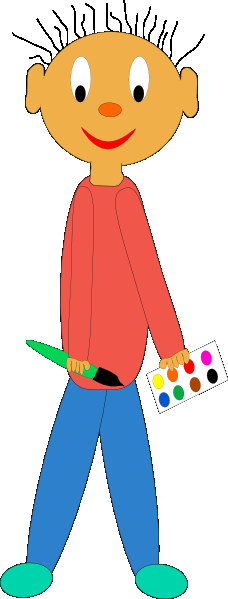
2. Choosing a picture book illustrator
Sometimes text for picture book already comes with illustrations. This means author of text illustrated book by him- or herself or asked a friend to do that. In general this is not a good idea, because in that case project is too much determined.
There is little chance to fit it into publisher's vision of success in specific market. There is already a lot of work invested in text and illustrations and every rewriting, adapting etc. demands a lot of new work for author and illustrator.
In even more cases illustrations comes with text, because a lot of illustrators believe writing text for children is so easy anybody can do that and they write the story by themselves.
The story is build on illustrations, but plot, development of characters and message of the story is too often neglected.
Best option in my opinion is having author AND illustrator, because in creative atmosphere 1 + 1 always equals more than 2.
So when editor has a text in his hands, he should choose an illustrator with proper style. How to find children illustrator? Ask around, go to the library, read yellow pages, place and add... Whatever.
But beware! Best illustrators are often busy for years ahead and they can be very expensive too. I guess this is a theme for another lens too.
Different styles of writing call for... - different styles of illustrating!
Click thumbnail to view full-size



Which style is your favorite?
Please choose only one of the squirrels above (your favorite)!
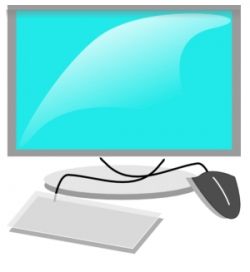
3. Design a children book
When you have text and pictures, you have to put them together in digitized form. In practice that means high resolution PDF, made by one of open source or commercial programs.
Designing process can be divided into scanning, editing, page breaking, designing cover, correcting and so on and so on, but in reality all that can be done by one person who must possess some creativity and a lot of technical skill.
Designer should for example know how are pages in printing folded, cut (margins of center pages are cut more than front and last!), how are colors mixed and many more vital details.
It is designer's job to choose proper fonts and contrasts and it is technical editor's job to find all possible errors. Well, in small publishing houses, job of technical editor is often done by publisher himself...
When you look for designer, you will find designers with a lot of creativity, which is good and designers with a lot of experience, which is better. But list of tips for choosing a designer deserve separate lens!
Let's have a look at typical page break - Note the marks for centering and cutting!
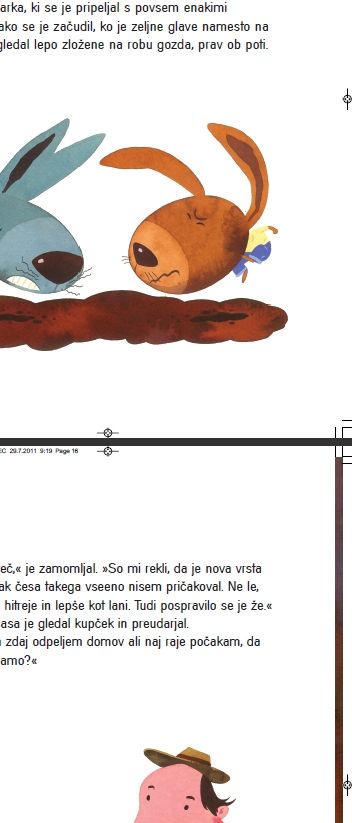
If you want to check more pages of this book, just click this link. This is one of picture books published by our company and part of our signature series
When file is ready for printing, we can say the creative part is done.
Next steps are pure business!
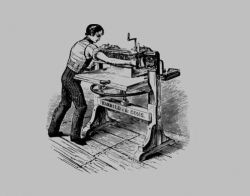
4. Printing a picture book
Printing is special adventure in book publishing business. It takes a lot of skill to find quality printer at the right time and for right price.
If you want to print a picture book, you should work with printer who has already printed a lot of PICTURE BOOKS. That's right, if printer already has printed just about everything is probably not good enough. Picture books are special because we make them for most demanding costumers - children, who will put them into all sorts of difficult tests.
Picture book has to be durable to survive twisting, bending, chewing and who knows what else. Kid's imagination is literally unlimited. And it should be!
So publisher should know what kind of paper and binding he wants, choose skilled printer and be very specific with his demands. If something goes wrong - and in most cases it will! - it should be clear who's fault it is. And all faults can be assessed in money. Negotiating with a printer is skill every publisher should learn if he wants to survive more than initial first two years of his existence.
You are absolutely right - we should make another lens on this subject!
Let's take a look at example of printing order - It should be short and simple!
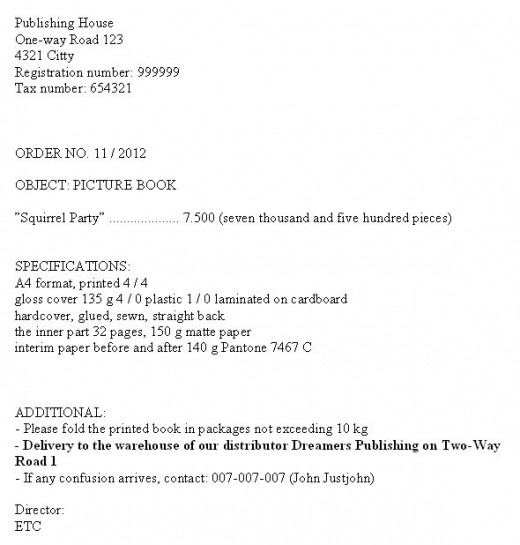
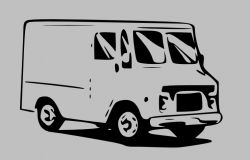
5. Book transportation
If you took few seconds to skim the printing order above, you could see the first phase of book transportation is already done (bold line). Printer should deliver books to publisher or distributor (company who take care of selling business) with no extra charge. Smart move for publisher, right?
Of course this is only a start. One single book can travel hundreds of miles before reaches its reader. And if you are small publisher transport of one or couple of titles can be really really expensive.
So the best solution is probably outsourcing all transporting problems! Sounds like a good idea for another lens?

6. Book warehousing
Books are delicate objects. Water (all kinds of humidity) is their biggest but not only problem. They should be packed in solid boxes, suitable for transportation in bulk and convenient for opening and sell in small stocks.
Best warehouse for small publisher is his living room, because it is cheap and near and safe. Unfortunately space for small publisher is always too limited. So second best solution is leaving the problems with book storage to distributor who must have books handy anyway to execute orders as soon is possible.
My advice: when you write a contract with distributor, try to convince him to store most of the edition under his roof. He will have more motivation to sell and publisher will have at least some space in his living room (will come handy for next book).
I suppose we have another strong case for one more lens dedicated to that part of publishing!
My three pieces of advice on picture books publishing
Picture book business is very similar to all other businesses. After many years of experience I must admit I still have a long way to master it. But if you ever try to establish your own publishing house, I can give you three important hints:
1. negotiate
2. negotiate
3. negotiate

7. Sell a book!
(or seven thousand of them...)
As you may imagine, publisher is quite exhausted by now. The final step - selling - is hardest of all.
How to find potential costumers? How to present a new book to them? How to sell a book and actually get money for all your efforts and expenses? These questions are nightmare for every publisher, not only small ones.
If you want to sell a book, you need a network. You need a database of costumers. You need lawyers to protect your rights. And it is just too much for publisher who publish only couple of books a year.
Best solution is to find a distributor who already has a network. Distributor who has all the contacts in libraries, bookstores, members of book clubs and other useful data necessary to sell some books. As you can see above, distributor with solid transportation system and spacious warehouse is even better.
When you find distributor who can took your books from printer, sell them and pay you the money, you made it. You are a winner! How to find him and negotiate with him? Another lens maybe?
